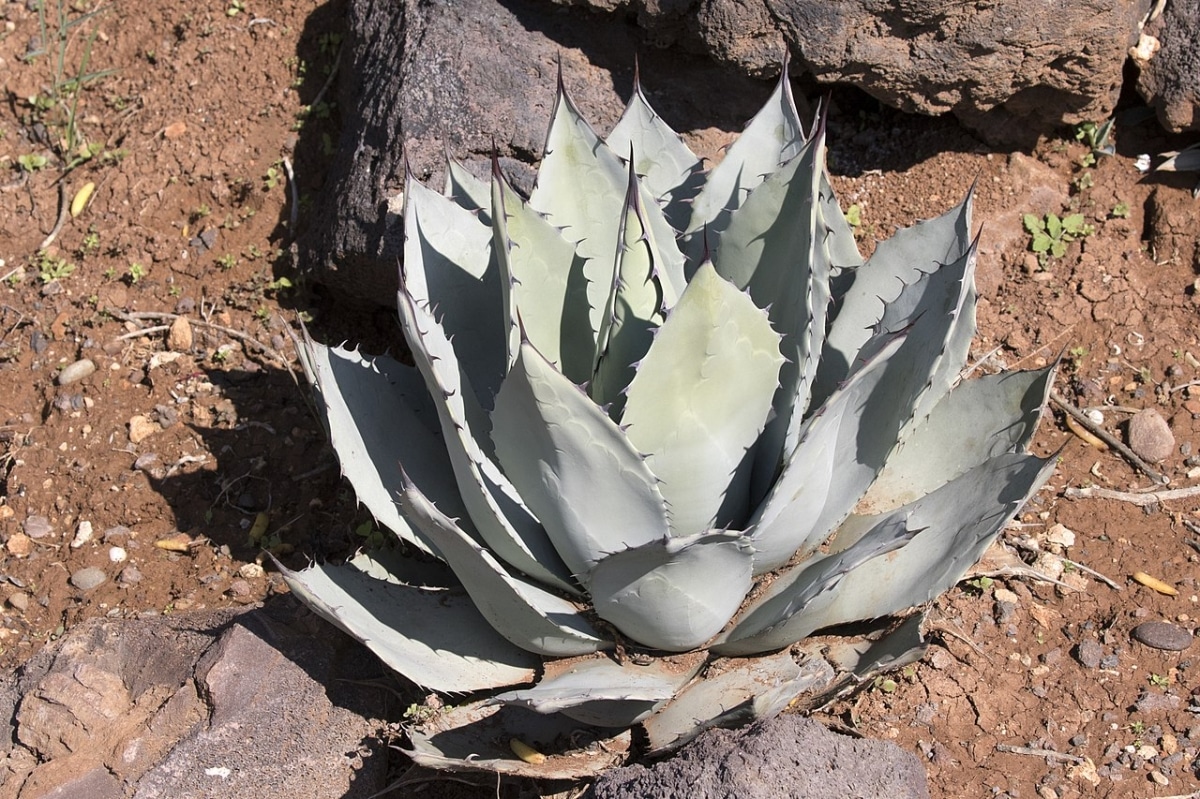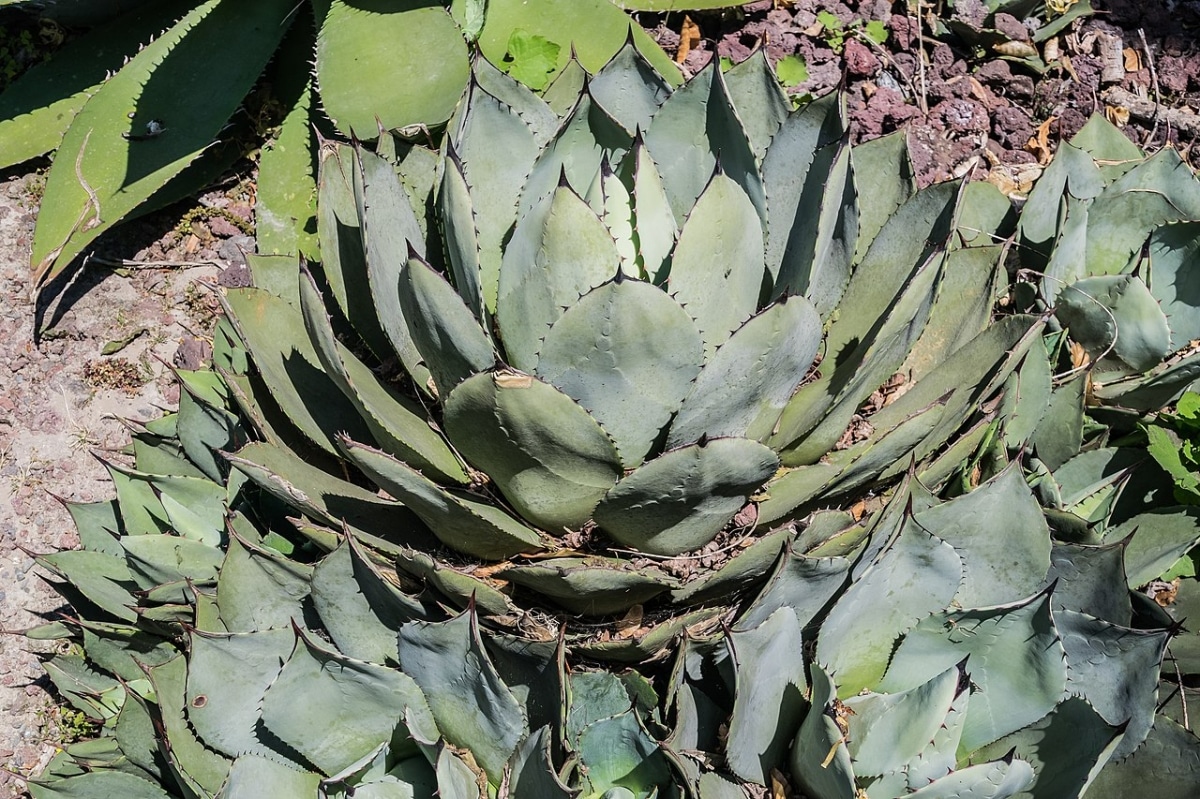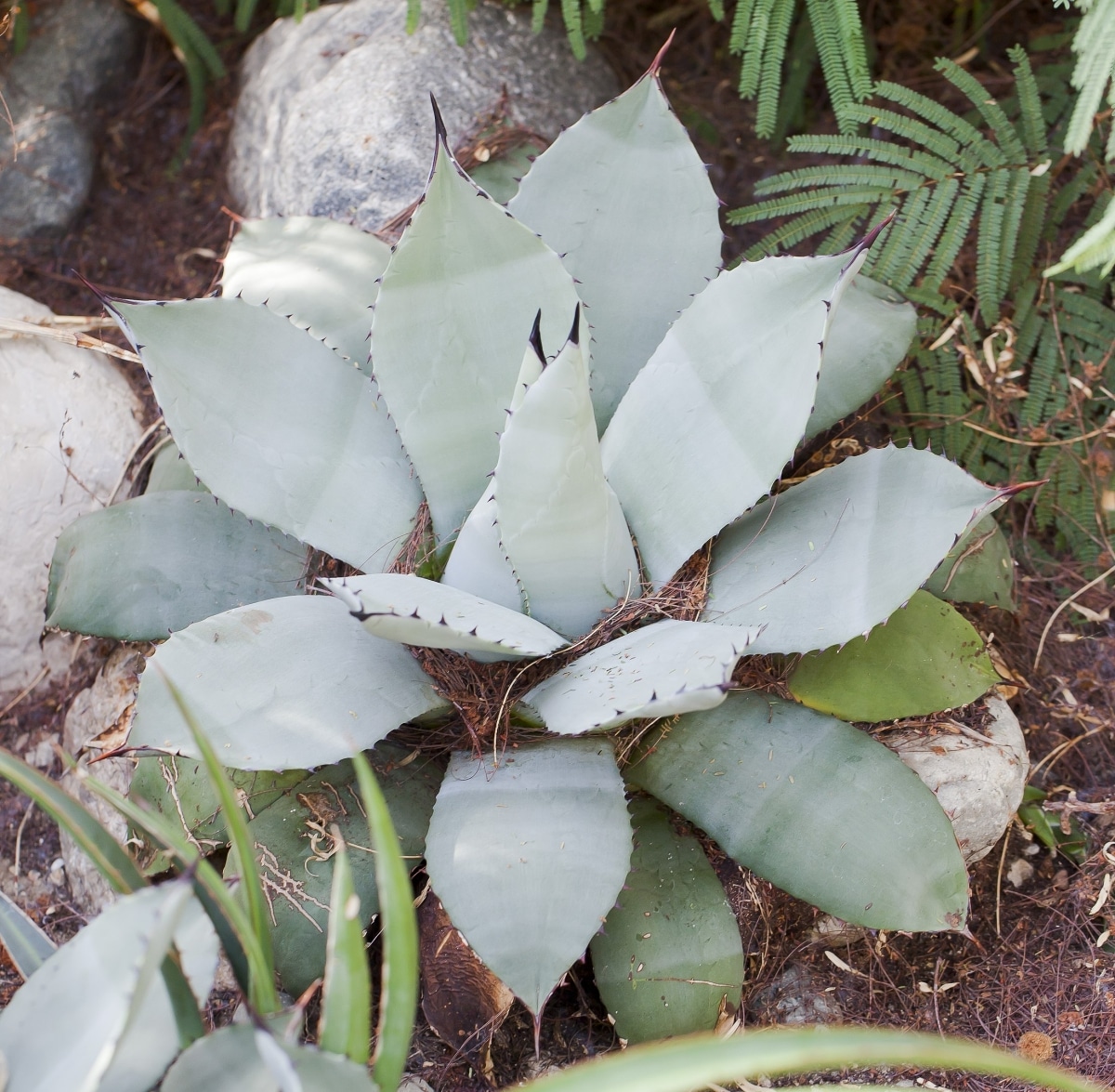
Image - Wikimedia / Zeynel Cebeci
Agaves are plants that are frequently grown in dry gardens. They equally resist both drought and extreme heat, that which can reach 45-50ºC in temperature. But of all the varieties there are, If you are looking for one that is less known and that stands out for its color, we recommend the Agave parryi.
This is a species that you can grow in a rockery for example, but it will also look great in a large pot. The only negative thing that can be said about this plant is that it only blooms once in its life and then dies, but a few years pass until the time comes.
Origin and characteristics of Agave parryi

Image - Wikimedia / Krzysztof Golik
El Agave parryi, popularly known as maguey or agave, is a species of crass that grows in the United States and Mexico. The leaves grow in rosettes, and are very hard, with spiny margins. These spines are short on the margin, but have a longer one at the tip or apex. As we anticipated, it blooms once before dying, producing a floral stem up to 3 meters high, from which clusters of yellow flowers sprout.
It is a gray-green plant, a color that contrasts very well with the black of its thorns. That is why it is ideal to break a bit with the monochrome that usually exists in gardens.
How do you take care of yourself?
It is a very resistant species, suitable for beginners, and for those people who do not have time to care for demanding plants. But keep in mind that is very sensitive to excess water, which is why it is important that it be planted in light soils that dry quickly.
In addition, if you choose to have it in a pot, you have to find one large enough so that it can continue to grow, otherwise it will stay small. In any case, below we will explain how to take care of the Agave parryi:
Location
It needs a lot of light; it's more, it must be grown in a sunny place, from a very young age. Even the seedlings can be kept in the sun. The agaves, all of them, including our protagonist, need to be fed directly throughout the day, or at least half a day. Only in this way will your plant grow well.
If you are going to have it in the garden, put it in a place where it can have a correct development. Plant it about 50 centimeters from the wall or walls, and at least 2-3 meters from trees. This way you will get it to grow straight and exposed to the sun.
Earth

Image - Wikimedia / Diego Delso
- In the garden: it is a plant that has to be in a light and well drained soil. In those that are heavy, the water takes longer to drain, so they remain wet longer, which is just what the roots of the Agave parryi they do not want to. Therefore, if your soil is like this, that is, heavy, compact and with a tendency to flood, you have to make a planting hole one meter deep by 50 centimeters in diameter, and then add a layer of 30-40 centimeters of volcanic clay, construction gravel, or some similar material. Then you can plant it with soil for succulents and cacti.
- Potted: the substrate must be equally light. If it retains water for a long time, it will be harmful to the roots and, consequently, also to the plant. Therefore, we advise putting soil for succulents (for sale here), or with a mixture of universal substrate with perlite in equal parts. By the way, the pot must have holes in its base so that the water can come out.
Irrigation
El Agave parryi it has to be watered very few times a week. In summer, as it is warmer, it can be watered once or at most twice, but only if the soil is dry.. Remember that it resists drought very well, but not excess water. So, if we have doubts, the best we can do is wait a little longer before watering our plant. Trust me: nothing is going to happen to him. In addition, even if he was thirsty, it would not be a problem, because when we rehydrate him again, he would recover quickly.
A very different case would be for us to water it frequently. Then its roots would suffer irreversible damage and, in serious cases, it would be difficult to recover it. Therefore, we only have to water occasionally.
Subscriber
It is possible to pay it with a fertilizer for cacti and succulents (on sale No products found.) following the instructions on the product. The ideal time to do this is from spring to late summer. If you live in an area where there are no frosts or they are very weak, down to -2ºC, you can continue to fertilize it in autumn.
Multiplication
Multiply by seeds or by separation of young. The latter sprout when the mother plant is dying, at the time of flowering or shortly after, when the flowers are wilting.
Plagues and diseases
It's very tough. In fact, none are known. But if you water too much, then yes you could end up falling victim to pathogenic fungi. In this case, it would be necessary to space the irrigations and treat with a fungicide that contains copper (for sale here).
Rusticity
It withstands well the frosts of up to -15ºC. But if the specimen is young it is better to protect itself a little.

Image - Wikimedia / Diego Delso
What did you think of the Agave parryi?